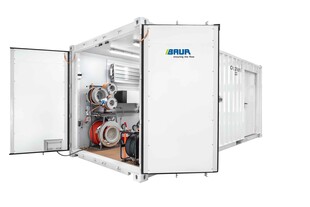Cable fault location expertise for land and submarine cables (XL-CFL)
Reliable fault location for maximum cost effectiveness

Due to the growing demand for power and increasing dependence on renewable energy, more and more of which is being generated offshore, submarine power cables are becoming indispensable for a reliable energy supply. Among experts, submarine cables are classified as critical infrastructure. Why critical? Firstly due to the harsh environment in which they are installed. Secondly, and this is also the most common cause of faults, submarine cables are exposed to mechanical stress, such as currents, fishing, or heavy ships' anchors, at irregular intervals and at all water depths, which can result in significant damage.
Suitable for all cable types:
- HVDC submarine cable links (monopole, bipole)
- HVDC land cable links
- AC submarine cable systems
- Combined AC land and submarine cable systems
What is the technical article about?
The growing use of renewable energies and the transition to e-mobility are increasing the dependency on electrical energy. One source of renewable energy is offshore wind farms, which are connected to the mainland by long cables. However, such high-voltage direct current transmission (HVDC) cables are also used on land. Any faults occurring on these long lines have enormous consequences for a country's electrical infrastructure.
Keeping downtime to a minimum and quickly locating these cable faults requires effective measurement technology. This technology must be versatile, cover various fault location methods, and be capable of adapting to the cable length in order to facilitate reliable fault detection. But which device covers the various measurement methods and can be adapted to the cable length?
The answer to this question and many others can be found in our free article.

Explanatory video: XL-CFL cable fault location on large land and submarine cables (subtitles in EN)
Since 2010, BAUR has been developing individual product solutions for fast and efficient fault location on long land and submarine cables. With the powerful systems and extensive expertise of BAUR specialists, critical cable faults on submarine cables have been located rapidly, efficiently, and precisely in recent years.
September 2020

Fault location on long power cables
Findings and experience concerning the use of submarine cables for long land connections
In a few years’ time, high-voltage cables hundreds of kilometres long and extending from one end of Germany to another will become part of the country’s critical infrastructure. Maximising the availability of these cables is crucial, so any faults need to be located swiftly and reliably and the cables repaired with minimum delay. This goes beyond the capability of conventional fault location technology but, fortunately, special solutions are available for extra-long cables based on technology partly derived from a field in which long cables are commonplace: submarine cables.












